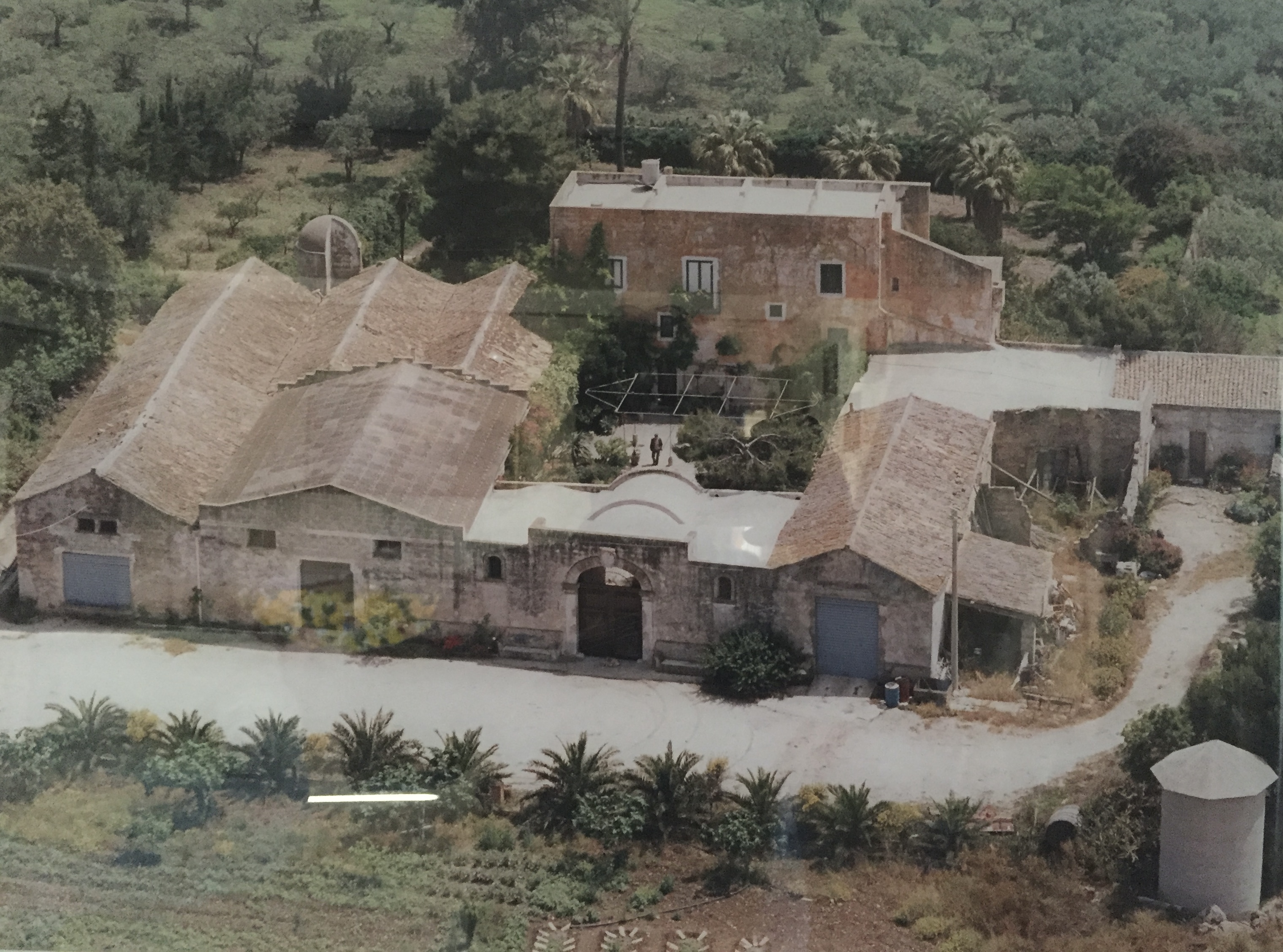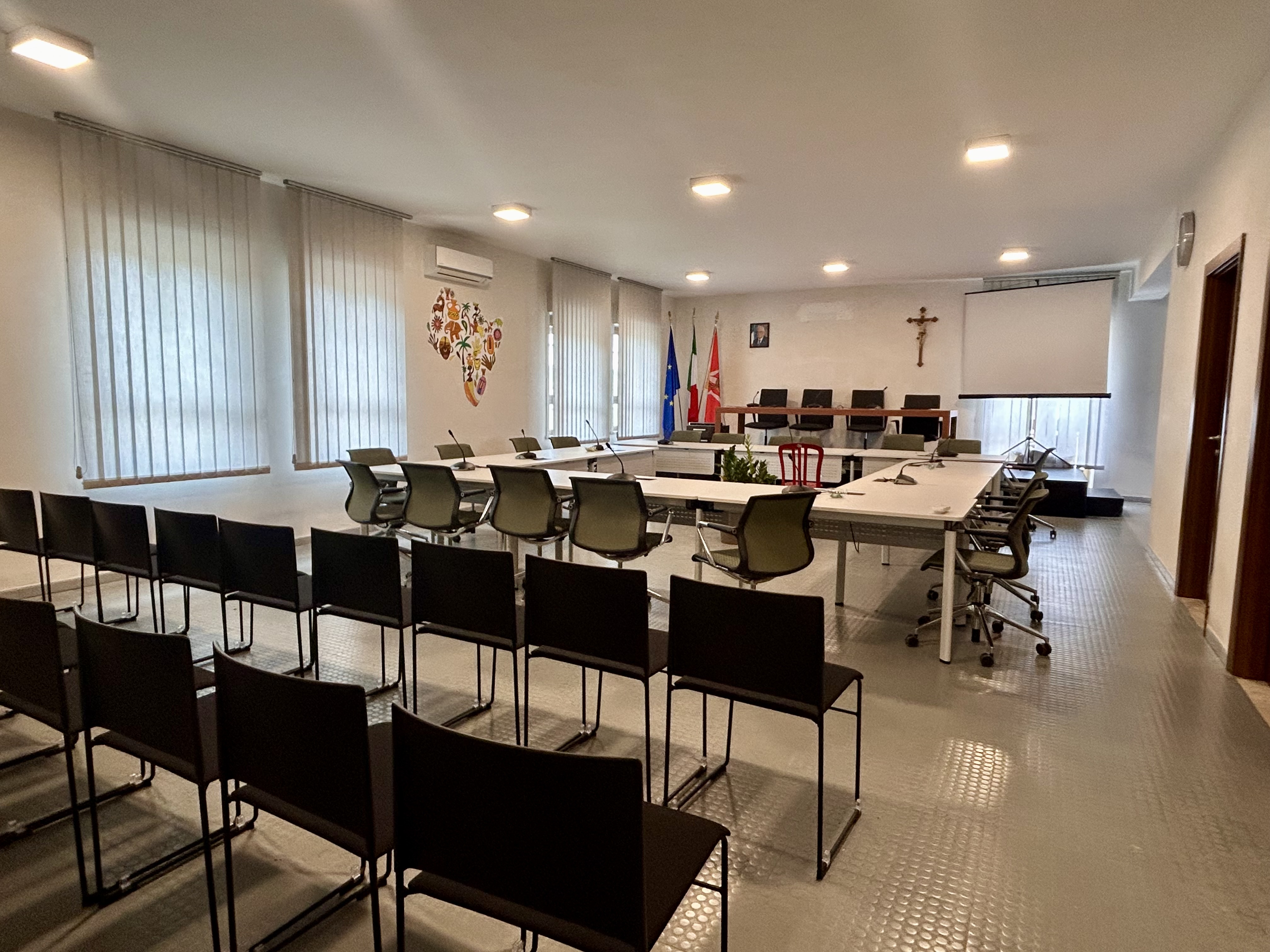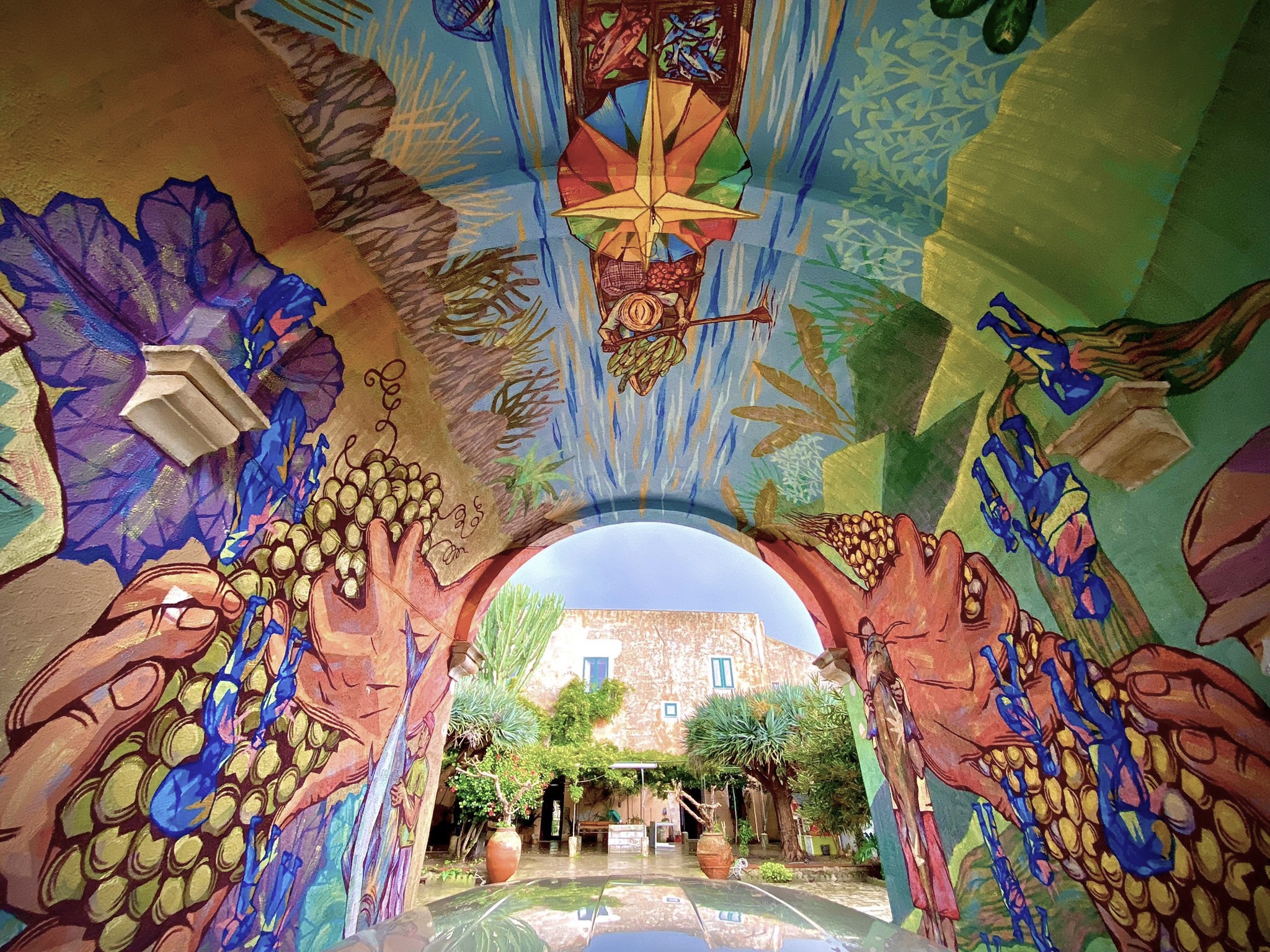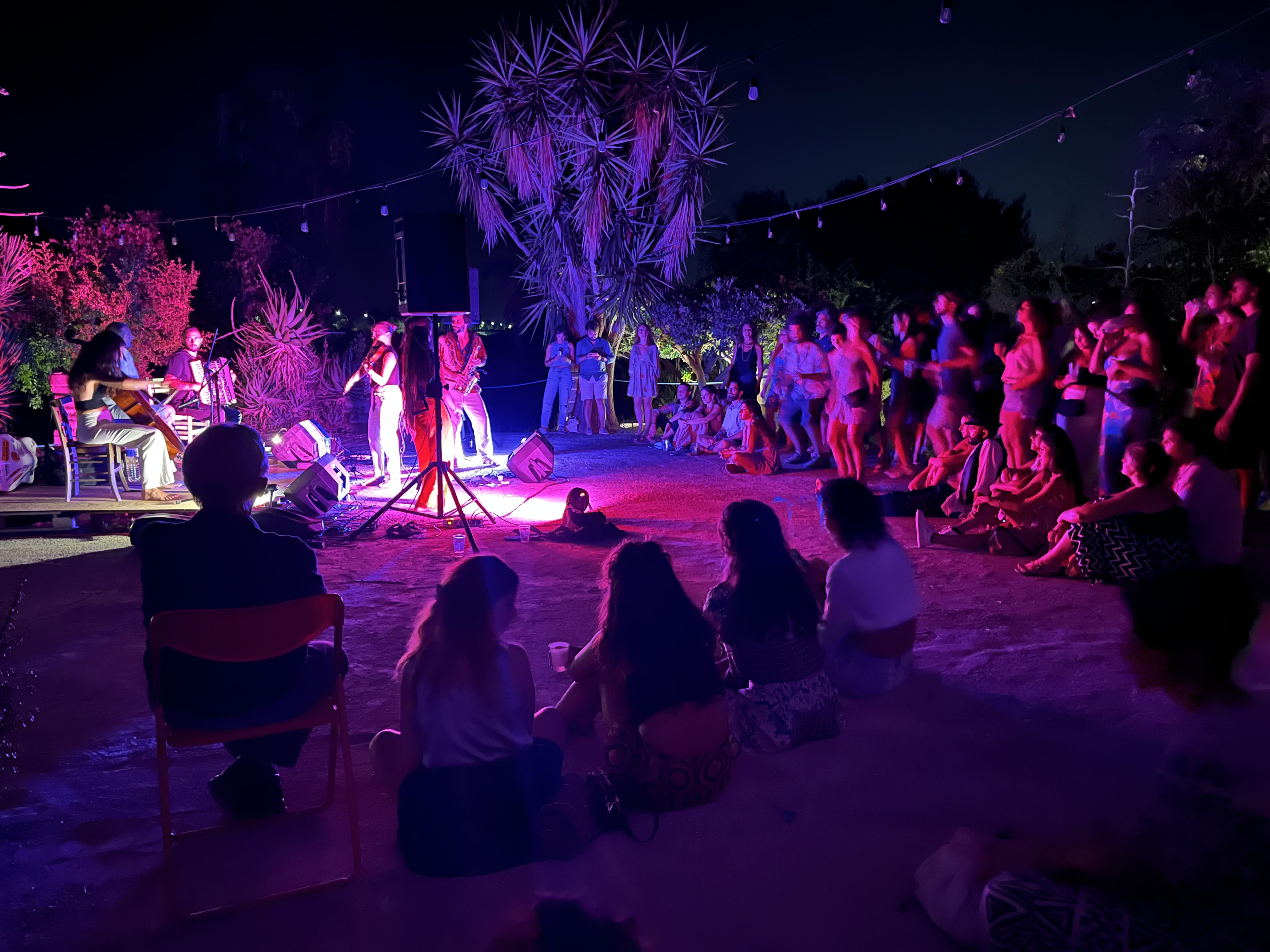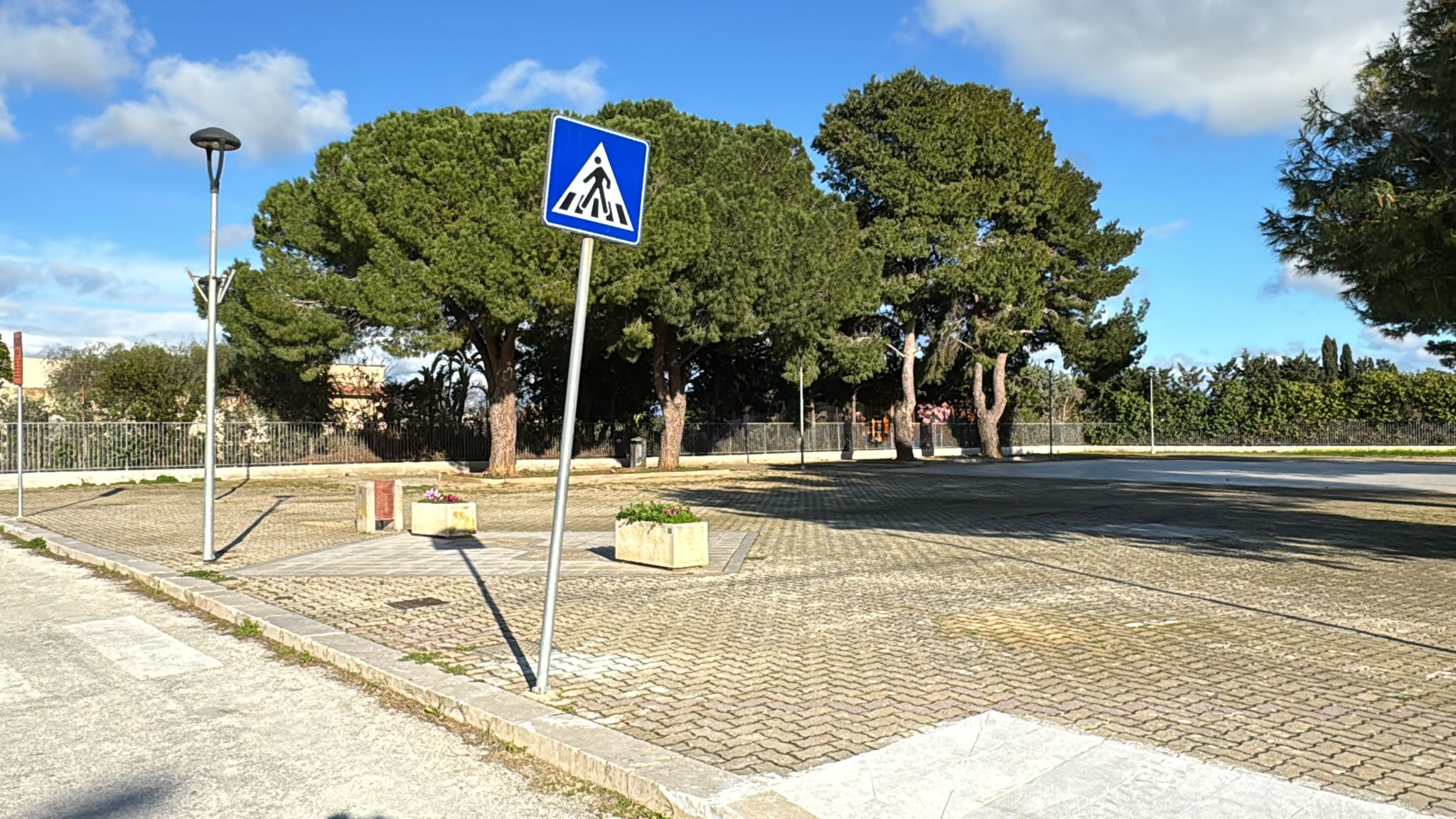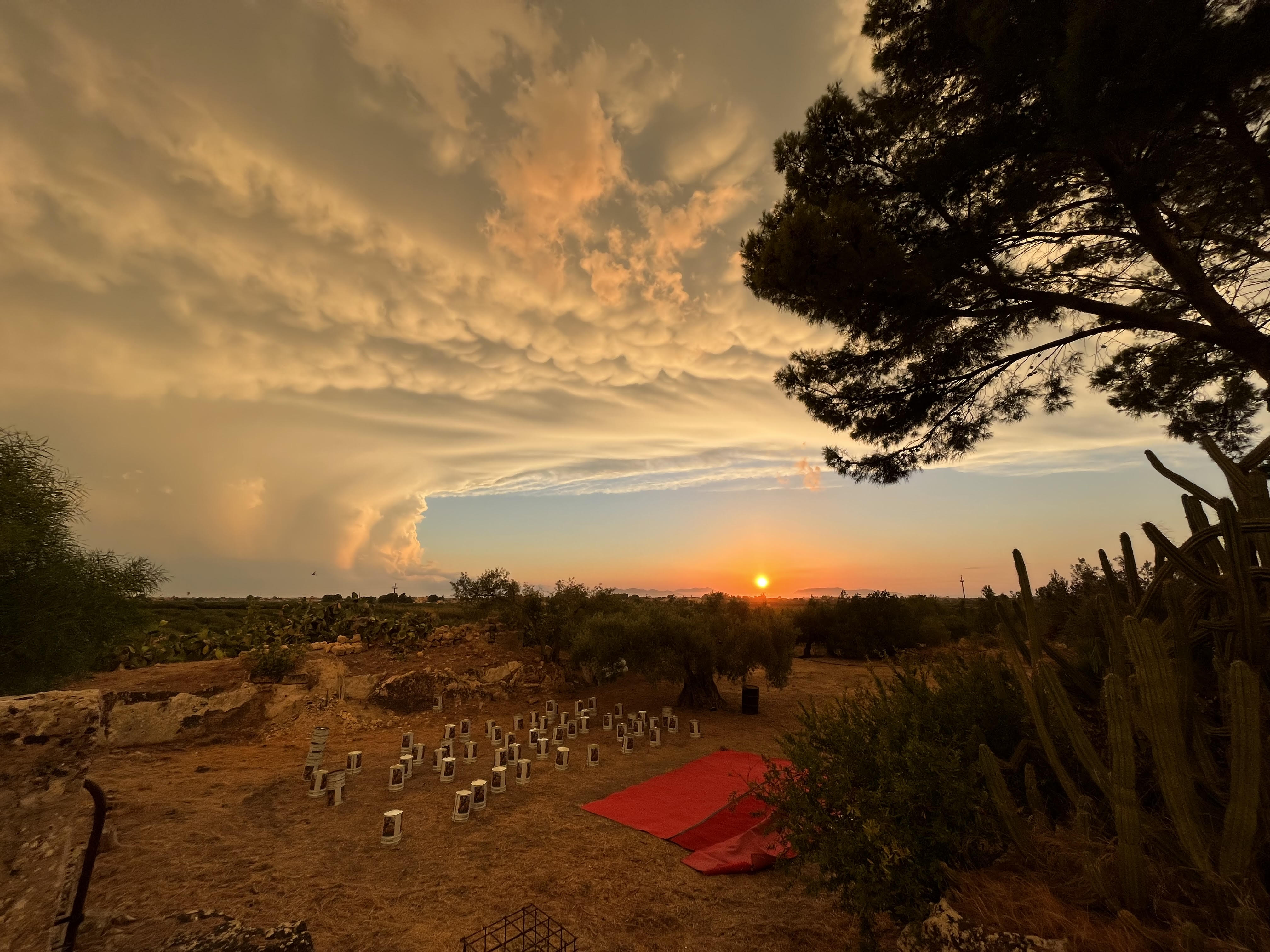Radica
Radica – Roots for change: Empowering Women, Revitalizing Communities
Radica – Roots for change: Empowering Women, Revitalizing Communities connects urban and rural spaces to foster female empowerment, sustainability, and cultural heritage. Through creative hubs, eco-friendly practices, and intergenerational collaboration, the initiative transforms Misiliscemi into a model of inclusive and sustainable development. Women lead the way in shaping a vibrant, resilient future rooted in tradition and innovation.
Italy
{Empty}
Prototype level
Yes
Yes
Yes
No
No
081025: Misiliscemi (IT)
Radica is a transformative initiative in Misiliscemi empowering women through art, sustainability, and community. The project connects key urban spaces with the rural Baglio Liberameliberatutti, creating hubs of creativity, innovation, and social cohesion. Misiliscemi, composed of eight distinct districts without a central core, urgently needs inclusive spaces for creativity, learning, and collaboration. Radica places women at the heart of change, fostering intergenerational dialogue, preserving traditions, and adopting sustainable practices.
The initiative benefits from the active involvement of the Liberameliberatutti association, one of the most dynamic cultural centers in Trapani.This organization will provide the Baglio as a venue and share its expertise from years of international exchanges, transforming the Baglio into a vibrant hub where communities meet, exchange ideas, and produce cultural and artistic content, revitalizing the territory.The overall goal is to empower women by offering spaces and programs that enhance their social, cultural, and economic roles while connecting Misiliscemi’s urban and rural landscapes. Target groups include young women focused on leadership and entrepreneurship, older women as custodians of tradition, and vulnerable women facing economic or social challenges, with benefits extending to the broader community.
Key objectives include fostering empowerment and inclusion through dedicated programs and spaces, promoting cultural and creative growth via craft workshops, storytelling, and artist residencies, enhancing sustainability by using the Baglio as an eco-hub, and encouraging intergenerational collaboration. Expected outcomes are increased social cohesion through women-led initiatives, new economic opportunities in agriculture, crafts, and creative industries, heightened awareness of sustainability and heritage preservation, and the revitalization of Misiliscemi as a model of inclusive, sustainable development led by women
The initiative benefits from the active involvement of the Liberameliberatutti association, one of the most dynamic cultural centers in Trapani.This organization will provide the Baglio as a venue and share its expertise from years of international exchanges, transforming the Baglio into a vibrant hub where communities meet, exchange ideas, and produce cultural and artistic content, revitalizing the territory.The overall goal is to empower women by offering spaces and programs that enhance their social, cultural, and economic roles while connecting Misiliscemi’s urban and rural landscapes. Target groups include young women focused on leadership and entrepreneurship, older women as custodians of tradition, and vulnerable women facing economic or social challenges, with benefits extending to the broader community.
Key objectives include fostering empowerment and inclusion through dedicated programs and spaces, promoting cultural and creative growth via craft workshops, storytelling, and artist residencies, enhancing sustainability by using the Baglio as an eco-hub, and encouraging intergenerational collaboration. Expected outcomes are increased social cohesion through women-led initiatives, new economic opportunities in agriculture, crafts, and creative industries, heightened awareness of sustainability and heritage preservation, and the revitalization of Misiliscemi as a model of inclusive, sustainable development led by women
Empowerment
Sustainability
Creativity
Heritage
Community
Radica is a bold project designed to revolutionize territorial development by adopting ecological practices, enhancing cultural heritage, and empowering women. The initiative aims to connect hubs of creativity, innovation, and social gathering by integrating urban and rural spaces to create unique synergies. In Misiliscemi’s urban center—which includes the city council chamber, an outdoor activity square, and the recreational center—these spaces will be revitalized into vibrant centers of participation and cultural development"
The Baglio Liberameliberatutti, a cornerstone of the project, will evolve from an agricultural hub into a center for artistic production, where tradition merges with contemporary creativity. In this space, sustainable agriculture workshops covering organic cultivation, water conservation, and circular resource use will be integrated with artistic activities and creative residencies, yielding outputs such as a community garden and site-specific artworks. These initiatives will generate tangible impact, demonstrating that environmental sustainability and artistic innovation can coexist and reinforce each other.
Moreover, Radica aims to create a dynamic green connection between the urban center and the Baglio via a thematic pathway that emphasizes pedestrian and cycling mobility, fostering an exchange of ideas and resources between city and countryside. The project is designed with flexibility: intervention sites will adapt to local needs while keeping the goal of transforming the recreational center into a focal point for female empowerment.
In summary, Radica stands as a beacon of innovation and sustainability, uniting art, tradition, and active participation. It will show that empowerment, heritage preservation, and eco-friendly practices can transform a community into a resilient, environmentally conscious model that inspires others.
The Baglio Liberameliberatutti, a cornerstone of the project, will evolve from an agricultural hub into a center for artistic production, where tradition merges with contemporary creativity. In this space, sustainable agriculture workshops covering organic cultivation, water conservation, and circular resource use will be integrated with artistic activities and creative residencies, yielding outputs such as a community garden and site-specific artworks. These initiatives will generate tangible impact, demonstrating that environmental sustainability and artistic innovation can coexist and reinforce each other.
Moreover, Radica aims to create a dynamic green connection between the urban center and the Baglio via a thematic pathway that emphasizes pedestrian and cycling mobility, fostering an exchange of ideas and resources between city and countryside. The project is designed with flexibility: intervention sites will adapt to local needs while keeping the goal of transforming the recreational center into a focal point for female empowerment.
In summary, Radica stands as a beacon of innovation and sustainability, uniting art, tradition, and active participation. It will show that empowerment, heritage preservation, and eco-friendly practices can transform a community into a resilient, environmentally conscious model that inspires others.
Radica is a transformative project in Misiliscemi designed to enhance the aesthetic and cultural experience through art, inclusive design, and heritage valorization. It connects key urban spaces with the rural Baglio Liberameliberatutti, creating vibrant hubs of creativity and social cohesion. Misiliscemi, composed of eight distinct districts without a unified center, urgently needs inclusive spaces for creativity, learning, and collaboration. The project will revitalize spaces such as the city council chamber, an outdoor activity square, and the recreational center.
The Baglio Liberameliberatutti will evolve from an agricultural hub into a center for artistic production, where tradition merges with contemporary creativity. In this space, sustainable agriculture workshops covering organic cultivation, water conservation, and circular resource use will integrate with artistic residencies, site-specific exhibitions, storytelling evenings, and craft workshops. These initiatives will produce tangible outcomes like a community garden and innovative artworks, demonstrating that environmental sustainability and artistic innovation can reinforce each other.
Additionally, Radica aims to create a dynamic green link between urban and rural areas via a thematic pathway that emphasizes pedestrian and cycling mobility, fostering continuous exchanges of ideas and resources between the city and the countryside. The project is designed with flexibility in mind, with intervention sites adaptable to local needs while maintaining the primary goal of transforming the recreational center into a hub for female empowerment.
In summary, Radica stands as a beacon of innovation and sustainability. It will show that empowerment, heritage preservation, and eco-friendly practices can transform a community into a resilient, environmentally conscious model that inspires others.
The Baglio Liberameliberatutti will evolve from an agricultural hub into a center for artistic production, where tradition merges with contemporary creativity. In this space, sustainable agriculture workshops covering organic cultivation, water conservation, and circular resource use will integrate with artistic residencies, site-specific exhibitions, storytelling evenings, and craft workshops. These initiatives will produce tangible outcomes like a community garden and innovative artworks, demonstrating that environmental sustainability and artistic innovation can reinforce each other.
Additionally, Radica aims to create a dynamic green link between urban and rural areas via a thematic pathway that emphasizes pedestrian and cycling mobility, fostering continuous exchanges of ideas and resources between the city and the countryside. The project is designed with flexibility in mind, with intervention sites adaptable to local needs while maintaining the primary goal of transforming the recreational center into a hub for female empowerment.
In summary, Radica stands as a beacon of innovation and sustainability. It will show that empowerment, heritage preservation, and eco-friendly practices can transform a community into a resilient, environmentally conscious model that inspires others.
The initiative focuses on empowering vulnerable groups by offering specific programs for women in situations of social or economic vulnerability. These programs will include targeted training, mentoring activities, and access to essential resources for their personal and professional development.These efforts will be complemented by intergenerational initiatives designed to connect older women with young participants, valuing diversity and fostering a constructive dialogue that enriches the experiences of all involved.At the same time, the project will promote inclusive governance by establishing a community committee led by women, tasked with overseeing the strategic direction of the initiative and ensuring that it reflects the needs and aspirations of all stakeholders. Regular forums will be organized to gather feedback and ideas from residents, thus creating a co-governance model based on local perspectives and requirements.
Additionally, the initiative will embrace universal design principles by providing multifunctional and flexible spaces in both the urban hub and the Baglio. These spaces, designed to host creative workshops, community meetings, and other activities, will be accessible to participants of all ages and cultural backgrounds, thanks to artistic installations and programs specifically designed to encourage inclusive participation. Finally, the project's exemplary approach will be realized through active community engagement, where placing women at the center as leaders and collaborators will ensure an inclusive and transparent decision-making process.The proposal also stands out for its cost-effectiveness and accessibility, offering free or low-cost programs and barrier-free design solutions that set a new standard for inclusivity.Moreover, the intergenerational impact of the initiative will help bridge the gaps between different age groups, promoting mutual learning and shared respect key elements for developing a cohesive and resilient community
Additionally, the initiative will embrace universal design principles by providing multifunctional and flexible spaces in both the urban hub and the Baglio. These spaces, designed to host creative workshops, community meetings, and other activities, will be accessible to participants of all ages and cultural backgrounds, thanks to artistic installations and programs specifically designed to encourage inclusive participation. Finally, the project's exemplary approach will be realized through active community engagement, where placing women at the center as leaders and collaborators will ensure an inclusive and transparent decision-making process.The proposal also stands out for its cost-effectiveness and accessibility, offering free or low-cost programs and barrier-free design solutions that set a new standard for inclusivity.Moreover, the intergenerational impact of the initiative will help bridge the gaps between different age groups, promoting mutual learning and shared respect key elements for developing a cohesive and resilient community
The Radica initiative focuses on empowering vulnerable groups by offering targeted programs for women facing social or economic challenges. These programs include specialized training, mentoring, and access to essential resources for personal and professional growth. Intergenerational initiatives will connect older women with younger participants, fostering constructive dialogue that enriches all involved.
In parallel, the project will promote inclusive governance by establishing a community committee led by women to oversee its strategic direction, ensuring that the initiative meets local needs and aspirations. Regular town hall meetings and community forums will gather feedback and ideas, creating a participatory governance model rooted in local perspectives.
Furthermore, the initiative embraces universal design principles by providing multifunctional, flexible spaces in both the urban hub and the Baglio. These areas—designed to host creative workshops, community meetings, and other activities—will be accessible to people of all ages and cultural backgrounds through artistic installations and tailored programs that encourage inclusive participation.
Finally, the project will be driven by active community involvement, placing women at the center as leaders and collaborators. This inclusive, transparent decision-making process, supported by free or low-cost programs and barrier-free design, will set a new standard for accessibility. The intergenerational impact will bridge age gaps, promote mutual learning, and foster shared respect—essential elements for building a cohesive and resilient community.
In parallel, the project will promote inclusive governance by establishing a community committee led by women to oversee its strategic direction, ensuring that the initiative meets local needs and aspirations. Regular town hall meetings and community forums will gather feedback and ideas, creating a participatory governance model rooted in local perspectives.
Furthermore, the initiative embraces universal design principles by providing multifunctional, flexible spaces in both the urban hub and the Baglio. These areas—designed to host creative workshops, community meetings, and other activities—will be accessible to people of all ages and cultural backgrounds through artistic installations and tailored programs that encourage inclusive participation.
Finally, the project will be driven by active community involvement, placing women at the center as leaders and collaborators. This inclusive, transparent decision-making process, supported by free or low-cost programs and barrier-free design, will set a new standard for accessibility. The intergenerational impact will bridge age gaps, promote mutual learning, and foster shared respect—essential elements for building a cohesive and resilient community.
At the local level, the initiative will actively engage the Misiliscemi community—especially women of diverse age groups and backgrounds—through focus groups, workshops, and participatory artistic residencies. This approach will allow them to express their needs and co-create activities to enhance local heritage, while local artisans, farmers, and cultural operators share their expertise to strengthen the link between tradition and innovation.
The Misiliscemi municipal administration will provide essential logistical support, facilitate access to urban spaces, and integrate the project into local development plans. Collaborations with schools, youth groups, and local NGOs will broaden participation, while local women’s associations and cultural groups will drive program development focused on empowerment, intergenerational dialogue, and sustainability. The Liberameliberatutti association will offer vital support to the municipal administration in executing project activities.
Regionally, Sicilian institutions will be invited to support the initiative by offering funding opportunities and promoting it within broader cultural and rural development strategies. Partnerships with regional universities, research centers, and artistic networks will enrich the project and help connect it with local artists, elevating its profile.
Nationally, the initiative will align with Italian policies on gender equality, rural revitalization, and cultural heritage, facilitating recognition and access to state funding. Collaborations with national women’s rights groups and cultural heritage institutions will further expand the project’s impact.
At the European level, the project will be integrated into EU frameworks—especially the New European Bauhaus—adopting its principles of sustainability, inclusion, and beauty. Collaborations with European cultural and women empowerment networks will promote knowledge exchange.
The Misiliscemi municipal administration will provide essential logistical support, facilitate access to urban spaces, and integrate the project into local development plans. Collaborations with schools, youth groups, and local NGOs will broaden participation, while local women’s associations and cultural groups will drive program development focused on empowerment, intergenerational dialogue, and sustainability. The Liberameliberatutti association will offer vital support to the municipal administration in executing project activities.
Regionally, Sicilian institutions will be invited to support the initiative by offering funding opportunities and promoting it within broader cultural and rural development strategies. Partnerships with regional universities, research centers, and artistic networks will enrich the project and help connect it with local artists, elevating its profile.
Nationally, the initiative will align with Italian policies on gender equality, rural revitalization, and cultural heritage, facilitating recognition and access to state funding. Collaborations with national women’s rights groups and cultural heritage institutions will further expand the project’s impact.
At the European level, the project will be integrated into EU frameworks—especially the New European Bauhaus—adopting its principles of sustainability, inclusion, and beauty. Collaborations with European cultural and women empowerment networks will promote knowledge exchange.
Radica will adopt an interdisciplinary approach to ensure a sustainable and inclusive impact by integrating various fields of knowledge in the project’s design and implementation. By collaborating with experts from multiple sectors, the initiative will foster synergy among art, environmental sustainability, urban planning, social sciences, and the local economy, creating a dynamic space for community growth and innovation.
Disciplines involved and their interaction:
- Art and culture: Artists, craftswomen, and cultural curators will develop creative residencies, workshops, and art installations, using art to tell the stories of Misiliscemi’s women and strengthen community belonging.
- Environmental sustainability and agriculture: Experts in sustainable agricultural practices and bioconstruction will guide space design and organize courses on organic cultivation techniques, conservation of natural resources, and circular economy principles.
- Urban planning and inclusive design: Architects and urban planners will focus on regenerating spaces, ensuring accessibility and harmony between urban and rural environments, by creating a thematic pathway that connects the urban center to the Baglio.
- Social sciences and anthropology: Researchers studying local communities will conduct in-depth studies on the traditions and historical memory of Misiliscemi’s women, facilitating the creation of intergenerational activities for effective knowledge transfer.
- Social economy and female entrepreneurship: Local development experts will provide training and support to create job opportunities in agriculture, crafts, and the creative sectors, thereby enhancing women’s economic independence.
Added value of the interdisciplinary process:
The integration of these disciplines will yield an innovative model in which culture, sustainability, and inclusion merge through a participatory process.
Disciplines involved and their interaction:
- Art and culture: Artists, craftswomen, and cultural curators will develop creative residencies, workshops, and art installations, using art to tell the stories of Misiliscemi’s women and strengthen community belonging.
- Environmental sustainability and agriculture: Experts in sustainable agricultural practices and bioconstruction will guide space design and organize courses on organic cultivation techniques, conservation of natural resources, and circular economy principles.
- Urban planning and inclusive design: Architects and urban planners will focus on regenerating spaces, ensuring accessibility and harmony between urban and rural environments, by creating a thematic pathway that connects the urban center to the Baglio.
- Social sciences and anthropology: Researchers studying local communities will conduct in-depth studies on the traditions and historical memory of Misiliscemi’s women, facilitating the creation of intergenerational activities for effective knowledge transfer.
- Social economy and female entrepreneurship: Local development experts will provide training and support to create job opportunities in agriculture, crafts, and the creative sectors, thereby enhancing women’s economic independence.
Added value of the interdisciplinary process:
The integration of these disciplines will yield an innovative model in which culture, sustainability, and inclusion merge through a participatory process.
The Radica initiative will stand out for its innovative approach to social inclusion, urban regeneration, and sustainable development. Rather than merely creating spaces for women, the project will redefine female empowerment through an integrated approach that blends art, sustainability, and active community participation. Its interdisciplinary and systemic method will merge social, economic, and cultural dimensions into a holistic model that fosters both personal and collective growth among women while strengthening cohesion between urban and rural areas.
A key innovative element lies in gender-sensitive urban planning. The project will revitalize spaces using an inclusive, sustainable design tailored to the specific needs of women of all ages. A thematic pathway connecting the urban center to the Baglio will serve as a unique example of linking city and countryside, significantly boosting empowerment and sustainability.
The project also emphasizes community-rooted sustainability by leveraging local knowledge and combining traditional agricultural practices with ecological innovations. Participatory workshops on organic cultivation techniques and creative resource reuse will ensure a lasting, sustainable impact.
Furthermore, the governance model will be groundbreaking: Radica will be co-designed and co-managed by local women through an inclusive governance committee and participatory decision-making, ensuring deep beneficiary engagement that surpasses traditional approaches. The initiative will also prioritize intergenerational dialogue by uniting young and older women in shared learning and creative activities, thus promoting knowledge transfer and preserving tradition.
By integrating these innovative elements, Radica will become a replicable model for other contexts, demonstrating that female inclusion can serve as the cornerstone of sustainable and participatory territorial regeneration.
A key innovative element lies in gender-sensitive urban planning. The project will revitalize spaces using an inclusive, sustainable design tailored to the specific needs of women of all ages. A thematic pathway connecting the urban center to the Baglio will serve as a unique example of linking city and countryside, significantly boosting empowerment and sustainability.
The project also emphasizes community-rooted sustainability by leveraging local knowledge and combining traditional agricultural practices with ecological innovations. Participatory workshops on organic cultivation techniques and creative resource reuse will ensure a lasting, sustainable impact.
Furthermore, the governance model will be groundbreaking: Radica will be co-designed and co-managed by local women through an inclusive governance committee and participatory decision-making, ensuring deep beneficiary engagement that surpasses traditional approaches. The initiative will also prioritize intergenerational dialogue by uniting young and older women in shared learning and creative activities, thus promoting knowledge transfer and preserving tradition.
By integrating these innovative elements, Radica will become a replicable model for other contexts, demonstrating that female inclusion can serve as the cornerstone of sustainable and participatory territorial regeneration.
The methodological approach underlying the Radica initiative is based on a combination of participatory, intergenerational, and sustainable development methods. The method is developed through iterative phases of co-creation, shared learning, and field experimentation, with particular attention to the ecological, social, and cultural dimensions of the project. The project will adopt a participatory and co-creative approach, actively involving beneficiaries in every phase—from design to implementation. Focus groups, co-creation workshops, and discussion panels will serve as essential tools to integrate the needs and priorities of women into the development plan. A governance committee composed mainly of local women will ensure that decisions are aligned with the community’s real needs, valuing local autonomy and expertise.The intergenerational approach will foster the bidirectional transfer of knowledge between older and younger women, particularly in cultural traditions and craftsmanship, while encouraging the adoption of innovative practices and strengthening intergenerational social capital. Furthermore, the initiative will incorporate principles of ecological sustainability and circular economy models, promoting sustainable agricultural techniques and the responsible use of natural resources. Special attention will be given to the integrated management of spaces through the creation of a thematic pathway connecting the urban spaces to the Baglio, thereby facilitating the flow of knowledge and resources between urban and rural contexts. In the educational sphere, the project foresees multidisciplinary pathways aimed at developing technical and professional skills, combined with critical reflection on gender dynamics, social inclusion, and the enhancement of local cultural heritage.The inclusive governance model will be continuously monitored and adapted through direct feedback from beneficiaries.
The Radica initiative offers numerous replicable and transferable elements for other territorial contexts, beneficiaries, and intervention areas, thanks to a model that integrates sustainable practices, participatory methodologies, and the valorization of social and cultural capital. First, the co-design model—developed through focus groups, working tables, and collaborative activities—will foster the active involvement of local communities, enabling the project to adapt to the specific needs of the territory and promoting the empowerment of vulnerable groups.
Furthermore, the urban-rural connection approach, which integrates spaces and resources through functional thematic pathways, allows for the enhancement of local resources and the development of circular economies, strengthening the bonds between urban and rural areas. Training programs and intergenerational mentoring activities, including storytelling, craft workshops, and artistic residencies, serve as effective tools for transferring cultural heritage and creating new economic opportunities.
Sustainable agricultural practices and creative resource reuse, implemented in the Baglio as an experimental hub, represent additional replicable elements capable of adapting to local climatic and socio-economic specificities, contributing to environmental protection and entrepreneurial development. Simultaneously, the inclusive governance model, based on management committees and participatory decision-making processes, will strengthen community decision-making and ensure transparent, shared resource management.
Finally, the adoption of digital tools for documenting and sharing experiences—such as online platforms, multimedia archives, practical guides, and toolkits—will extend the initiative's impact beyond local boundaries, enabling other actors to adopt and adapt the best practices developed within the Radica framework.
Furthermore, the urban-rural connection approach, which integrates spaces and resources through functional thematic pathways, allows for the enhancement of local resources and the development of circular economies, strengthening the bonds between urban and rural areas. Training programs and intergenerational mentoring activities, including storytelling, craft workshops, and artistic residencies, serve as effective tools for transferring cultural heritage and creating new economic opportunities.
Sustainable agricultural practices and creative resource reuse, implemented in the Baglio as an experimental hub, represent additional replicable elements capable of adapting to local climatic and socio-economic specificities, contributing to environmental protection and entrepreneurial development. Simultaneously, the inclusive governance model, based on management committees and participatory decision-making processes, will strengthen community decision-making and ensure transparent, shared resource management.
Finally, the adoption of digital tools for documenting and sharing experiences—such as online platforms, multimedia archives, practical guides, and toolkits—will extend the initiative's impact beyond local boundaries, enabling other actors to adopt and adapt the best practices developed within the Radica framework.
Radica addresses major global challenges through innovative, sustainable, and participatory local solutions, creating a replicable model for territorial development. It tackles issues such as climate change, gender inequality, cultural heritage loss, social exclusion, and the crisis of rural areas.
Regarding climate change, the project will promote sustainable agricultural practices, responsible water resource management, and the circular economy. By using the Baglio as an ecological hub, it will test solutions to reduce waste, improve energy efficiency, and spread regenerative agricultural techniques that can be transferred to other rural communities.
In terms of gender inequality, Radica will create spaces where women can develop skills, strengthen leadership, and access new economic opportunities. Workshops, mentoring programs, and a participatory governance model will form the core of female empowerment, which can be adopted in other contexts.
The project will also address rural depopulation by stimulating new local economies based on culture, craftsmanship, and sustainable agriculture. The connection between Misiliscemi’s urban center and the Baglio will demonstrate how targeted regeneration actions can counteract depopulation.
To combat the loss of cultural heritage and intergenerational disconnect, the initiative will adopt an intergenerational approach that values the knowledge of older women and transfers it to younger generations through storytelling activities, artistic residencies, and traditional craft workshops.
Finally, in response to social exclusion and low civic participation, the project is based on a co-creation and inclusive governance model that will actively involve the community in designing and managing shared spaces, thereby strengthening social cohesion and local democracy.
Regarding climate change, the project will promote sustainable agricultural practices, responsible water resource management, and the circular economy. By using the Baglio as an ecological hub, it will test solutions to reduce waste, improve energy efficiency, and spread regenerative agricultural techniques that can be transferred to other rural communities.
In terms of gender inequality, Radica will create spaces where women can develop skills, strengthen leadership, and access new economic opportunities. Workshops, mentoring programs, and a participatory governance model will form the core of female empowerment, which can be adopted in other contexts.
The project will also address rural depopulation by stimulating new local economies based on culture, craftsmanship, and sustainable agriculture. The connection between Misiliscemi’s urban center and the Baglio will demonstrate how targeted regeneration actions can counteract depopulation.
To combat the loss of cultural heritage and intergenerational disconnect, the initiative will adopt an intergenerational approach that values the knowledge of older women and transfers it to younger generations through storytelling activities, artistic residencies, and traditional craft workshops.
Finally, in response to social exclusion and low civic participation, the project is based on a co-creation and inclusive governance model that will actively involve the community in designing and managing shared spaces, thereby strengthening social cohesion and local democracy.
Radica will be implemented using a methodology rooted in New European Bauhaus values—sustainability, inclusion, and aesthetics—by integrating participatory processes, technological innovation, and a multi-stakeholder governance model.
In Phase 1, the project will refine its operational model by revitalizing key urban spaces through new programming to become hubs for creativity, inclusion, and sustainability, all without major structural change. Simultaneously, existing initiatives at the Baglio will be strengthened to blend traditional practices with innovation, emphasizing sustainability and female empowerment. Multidisciplinary experts will collaborate with the community to co-design strategies for cultural, artisanal, and environmental regeneration.
Phase 2 will activate governance and participation by establishing a multi-actor committee of local stakeholders to oversee the project. A digital co-creation platform, public forums, and participatory workshops will continuously gather feedback.
Phase 3 involves launching cultural and educational programs. Training courses on sustainable crafts, female leadership, agroecology, and circular entrepreneurship will be offered, while European artists engage in residencies to create site-specific works. The initiative will also host thematic events and festivals to promote sustainability, intergenerational exchange, and cultural heritage.
Phase 4 will validate, monitor, and scale the project by implementing impact metrics and developing guidelines for replicating the Radica model in other European contexts.
By applying NEB principles—using natural, local materials, agroecological practices, and universally accessible, art-integrated spaces—the project will ensure a lasting, inclusive, and aesthetically enriched impact. Next steps include optimizing space design through co-creation, forming partnerships with European research centers, and maintaining continuous impact monitoring to adapt to evolving needs.
In Phase 1, the project will refine its operational model by revitalizing key urban spaces through new programming to become hubs for creativity, inclusion, and sustainability, all without major structural change. Simultaneously, existing initiatives at the Baglio will be strengthened to blend traditional practices with innovation, emphasizing sustainability and female empowerment. Multidisciplinary experts will collaborate with the community to co-design strategies for cultural, artisanal, and environmental regeneration.
Phase 2 will activate governance and participation by establishing a multi-actor committee of local stakeholders to oversee the project. A digital co-creation platform, public forums, and participatory workshops will continuously gather feedback.
Phase 3 involves launching cultural and educational programs. Training courses on sustainable crafts, female leadership, agroecology, and circular entrepreneurship will be offered, while European artists engage in residencies to create site-specific works. The initiative will also host thematic events and festivals to promote sustainability, intergenerational exchange, and cultural heritage.
Phase 4 will validate, monitor, and scale the project by implementing impact metrics and developing guidelines for replicating the Radica model in other European contexts.
By applying NEB principles—using natural, local materials, agroecological practices, and universally accessible, art-integrated spaces—the project will ensure a lasting, inclusive, and aesthetically enriched impact. Next steps include optimizing space design through co-creation, forming partnerships with European research centers, and maintaining continuous impact monitoring to adapt to evolving needs.

